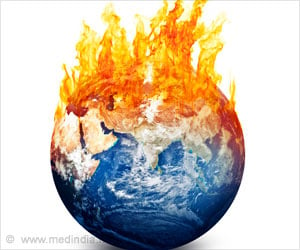
Who is More Commonly Affected by Extreme Heat?
Although the adverse health impacts of heat have been well documented among older adults, less is known about the potential impacts of heat on young and middle-aged adults.
The new study examined the association between extreme temperatures and visits to the emergency department (ED) and found that days of extreme heat were associated with adults aged 18-64.
Previous studies on the health impacts of heat have focused primarily on mortality or hospital admissions among seniors.
This study is the first national-scale assessment of the effects of extreme heat on adults of all ages, as well as the first national study to consider ED visits as a marker of adverse impacts of heat on all adults.
“Many illnesses that lead to utilization of the emergency department do not lead to hospitalization because they can be treated in a short amount of time, particularly among the younger adult population,” says study senior author Dr. Gregory Wellenius, professor of environmental health and director of the Program on Climate and Health at BUSPH.
Researchers analyzed anonymous healthcare utilization claims data to quantify the risk of ED visits for any cause and for specific conditions potentially associated with increasing temperatures during the warm season (between May and September) in almost 3,000 US counties from 2010 to 2019.
They found that days of extreme heat (varying by location, but averaging about 93 degrees Fahrenheit), were associated with a 66 percent increased risk of ED visits for heat-related illness, as well as a 30 percent increased risk for renal disease, compared to ED visits on cooler days. But the risk associated with extreme heat varied by age.
A day of extreme heat was associated with a 10.3 percent higher risk of ED visits among people ages 45 to 54 years old, compared to a 3.6 percent higher risk among those older than 75.
Younger adults may be at greater risk of exposure to extreme heat, particularly workers who spend substantial time outdoors and they may not be aware of this risk.
The findings were also consistent with previous research that has shown that people in US counties with lower warm-season temperatures still experience higher risks of heat-related complications.
“While extreme heat threatens everyone’s health, this study provides further evidence that it is especially dangerous in regions with cooler climates that may be less adapted to heat.
Many of these heat-related complications can be prevented through policy changes that reduce exposure to heat or improve people’s susceptibility and adaptivity to heat. These effective policies will differ among regions, states, and counties.
Source: Medindia
Stay connected with us on social media platform for instant update click here to join our Twitter, & Facebook
We are now on Telegram. Click here to join our channel (@TechiUpdate) and stay updated with the latest Technology headlines.
For all the latest Health News Click Here
For the latest news and updates, follow us on Google News.

